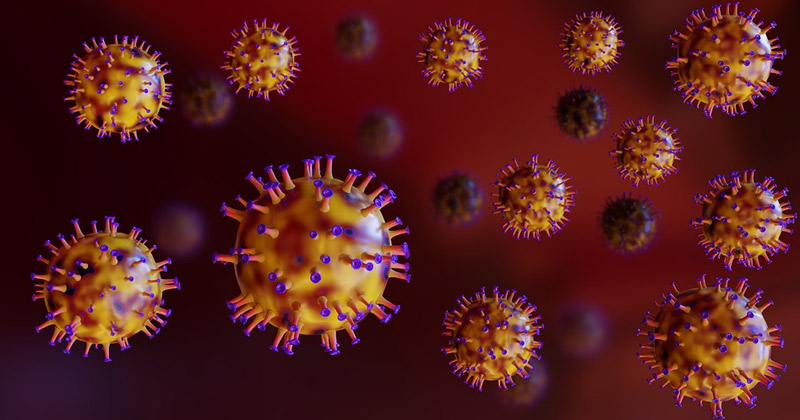Viruses are considered pirates who enter our cells and use them for their purposes. Many of the major epidemics and deadly diseases are caused by these pathogens, from AIDS to flu to Covid-19. But why do new, potentially dangerous pathogens keep appearing? Let’s take a look at the secrets of SARS-Cov-2 and other viruses to find out why viruses are so successful.

Viruses cannot multiply without outside help. Unlike bacteria, they do not consist of a cell, nor do they have a metabolism for the production of proteins. Strictly speaking, they are not counted among living things. But this in no way diminishes the success of the pathogens. Because viruses have developed a strategy to spread by becoming cell pirates.
Viruses infect hosts and hijack their cells for their purposes. They infiltrate their genetic material into the foreign cells and force them to use this information to produce numerous virus particles to multiply the viruses. Normally, the host’s own defense mechanisms would prevent this. However, during the course of the evolution, the pathogens and their involuntary helpers developed various methods to defeat the protection systems.
From flu to Covid-19
We humans too are repeatedly victims of such viruses. Whether colds, flu, or now the new types of coronaviruses, the pathogens have become constant companions. Vaccinations offer the most effective protection against potentially dangerous viruses. Therefore, researchers are searching for possible vaccines against SARS-CoV-2 under tremendous pressure.
Scientists take advantage of the fact that our immune system can recognize foreign intruders by certain characteristic features such as protein structures and then form appropriate antibodies to defend them. Vaccines contain such virus identifiers or the building instructions for them and thus prepare the body for a future infection.
Virus Mutates Quickly – Why Viruses are so Successful

Vaccinations have already given us the ability to fight many viruses. Nevertheless, the fight against viruses is difficult. One of the main reasons for this is that viruses are extremely versatile and constantly generate new strains through genetic mutations. This ability is particularly pronounced in viruses with the genetic material RNA, such as influenza and coronaviruses as they have the highest mutation rate that has ever been measured.
The viruses increase their adaptability, for example, the virus responsible for seasonal flu regularly changes so much that old vaccines no longer work. The vaccine is therefore adapted every year to the properties of the viruses that are currently circulating or are expected.
Suggested Read: Are some Blood types particularly susceptible to Coronavirus?
Danger From The Animal Kingdom
Again and again, completely unknown viral pathogens appear from nowhere. In recent years alone, mankind has been hit by several new viruses. The spectrum ranges from Nipah, SARS, MERS Zika virus to the latest CoronaVirus. In principle, a new type of pathogen can appear suddenly and at any time, which in extreme cases even has the potential to trigger a serious epidemic making viruses so successful.
Where Do These New Viruses Come From?
They often have their origin in animals. This is probably also the case with the currently rampant coronavirus. According to analysis, SARS-Cov-2 originated from the recombination of two virus strains and originally comes from bats, from which it has been passed on to humans via other animals, as were probably SARS-Cov-1 and Ebola. Researchers also believe that this is not an accident and can be a result of human intervention.
Risky Upgrade
Studies indicate that bats have an immune system that is particularly effective in suppressing viral infections. This triggers a fatal adaptation reaction in the virus as the viruses upgrade and become even more aggressive to survive, this characteristic of viruses makes them so successful.

This can become a problem if they attack us because our much weaker immune system is quickly overwhelmed with such virulent pathogens. It is, therefore, no coincidence that many highly pathogenic viruses come from bats.
Suggested Read: How To Protect Yourself From Coronavirus?
To quickly track down new viruses from the animal kingdom, researchers are now specifically looking for them. This is how they recently discovered hundreds of previously unknown viruses in insects.
However, there seems to be an unending wait for the coronavirus vaccine even though the scientists are working hard to develop one. Currently, there are more than 10 million people infected globally and more than 500,000 have lost their lives. Hopefully, we will develop a vaccine for COVID-19 before the toll increases.


